[170] Hedera helix, Ivy

Introduction
Hedera helix, (Common) Ivy, is a rampant evergreen, climber that can be an attractive cultivated garden plant or an unwanted weed.
There are several other geographically separated species of Hedera also called Ivy. Several unrelated species such as Toxicodendron, Poison Ivy, are also called Ivy.
Taxonomy
Kingdom – Plants
Division – Vascular Plants
Class – Angiosperms (Flowering Plants)
Order – Apiales
Family – Araliacieae
Genus – Hedera
Scientific Name – Hedera helix
Several cultivars are available.
Name
The name Ivy comes from old Germanic roots with unknown meaning. Hedera is the Latin name for the plant, coming from Ancient Greek meaning ‘clinging.’
Helix means spiral, as we will see in two days’ time.
Note than in US English this plant would be called a ‘vine.’ In the UK we call it a climbing plant (or climber) and reserve the word vine for grapevines.
Description
Ivy is unusual in that its habit depends on exactly where it is, even within the same plant.
On level ground it is a very low, creeping ground-cover plant but when it has the opportunity, when it meets walls, trees or rocky outcrops, it can climb upwards to at least thirty metres above the ground.
When climbing its leaves have the recognizable lobed structure that we know as ivy, but at the top of its climb they become simple and heart-shaped.
Its shoots also change. While climbing, small aerial roots help it to hold on, and elsewhere the shoots are self-supporting.
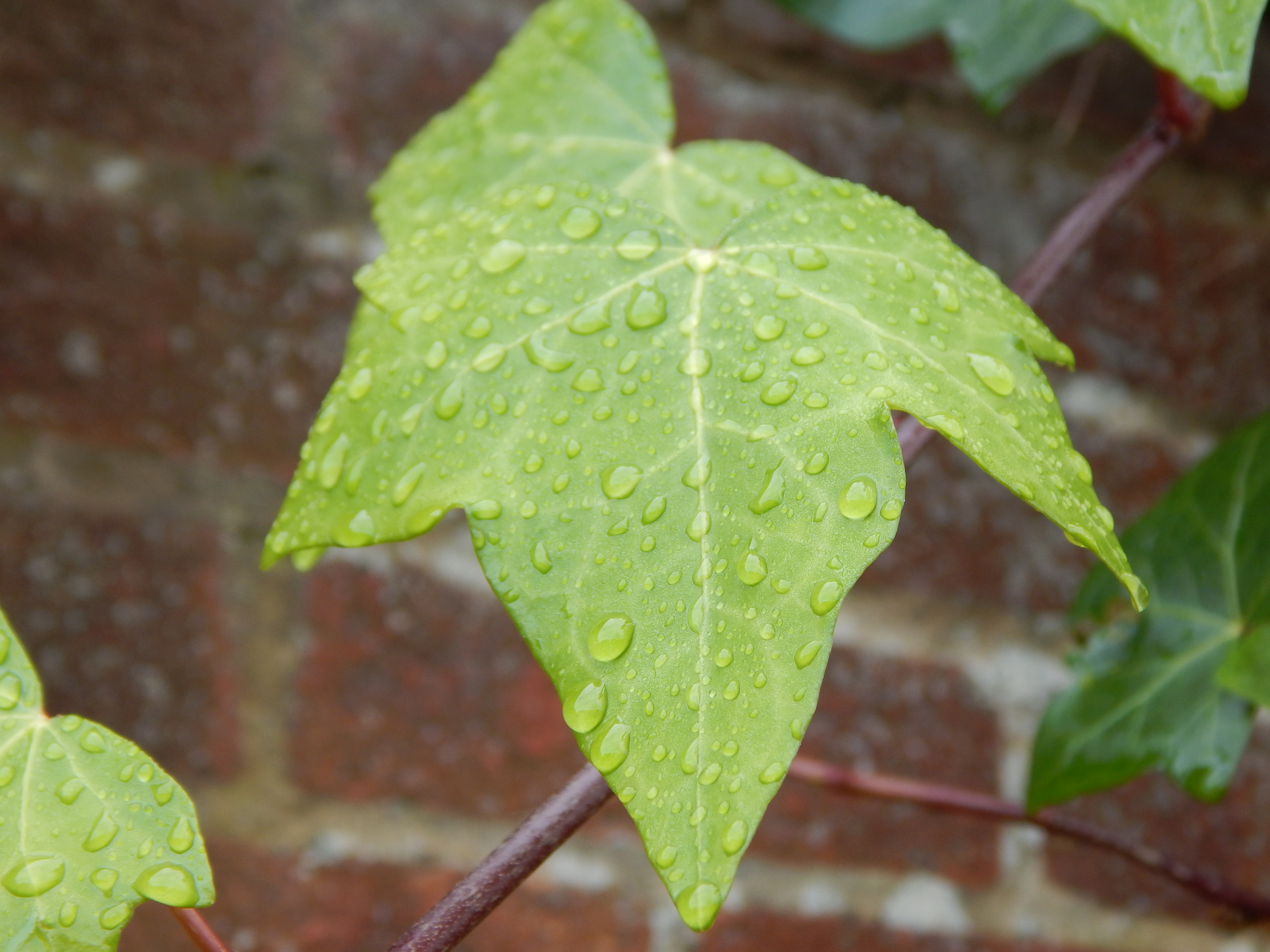
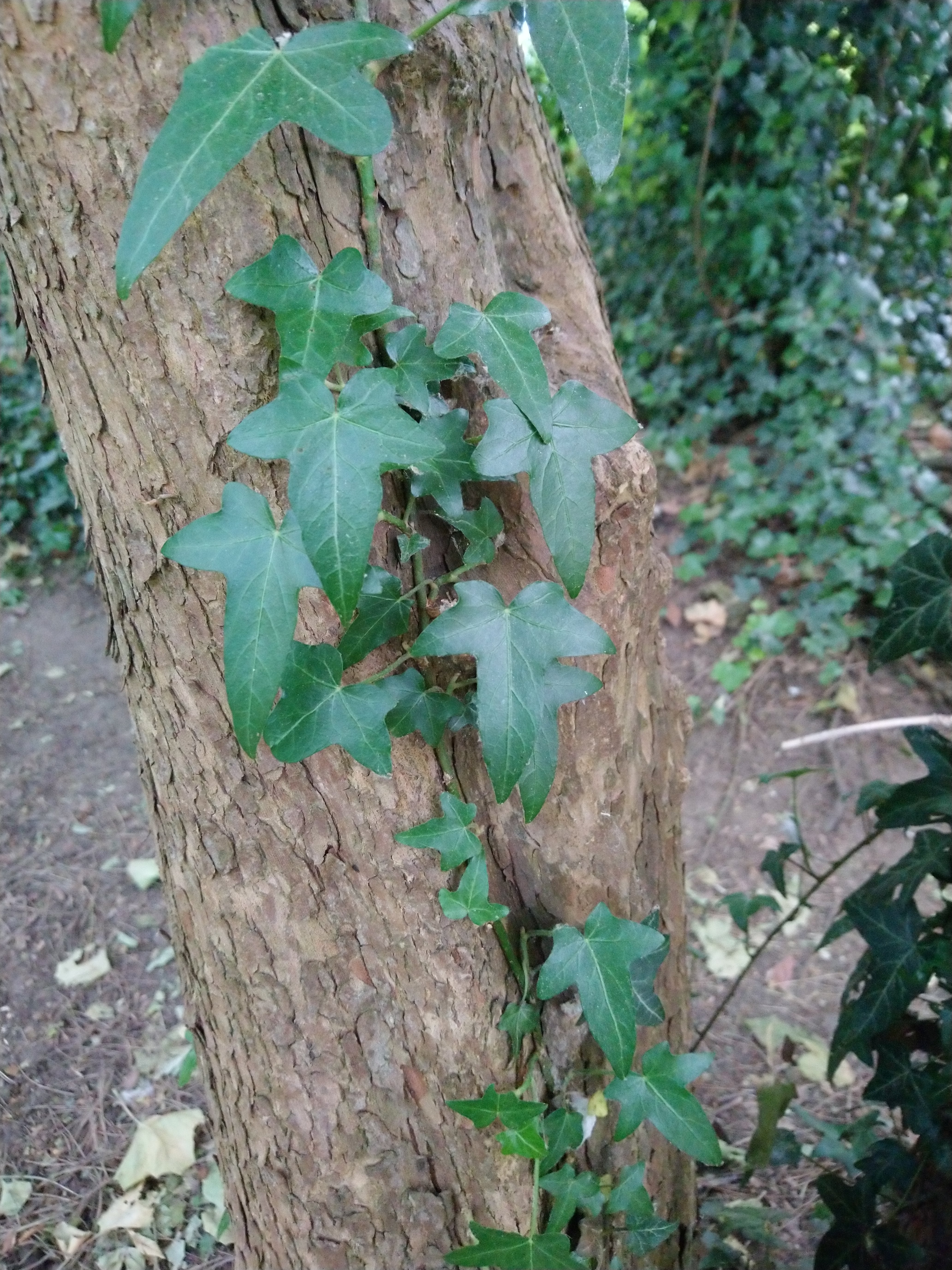
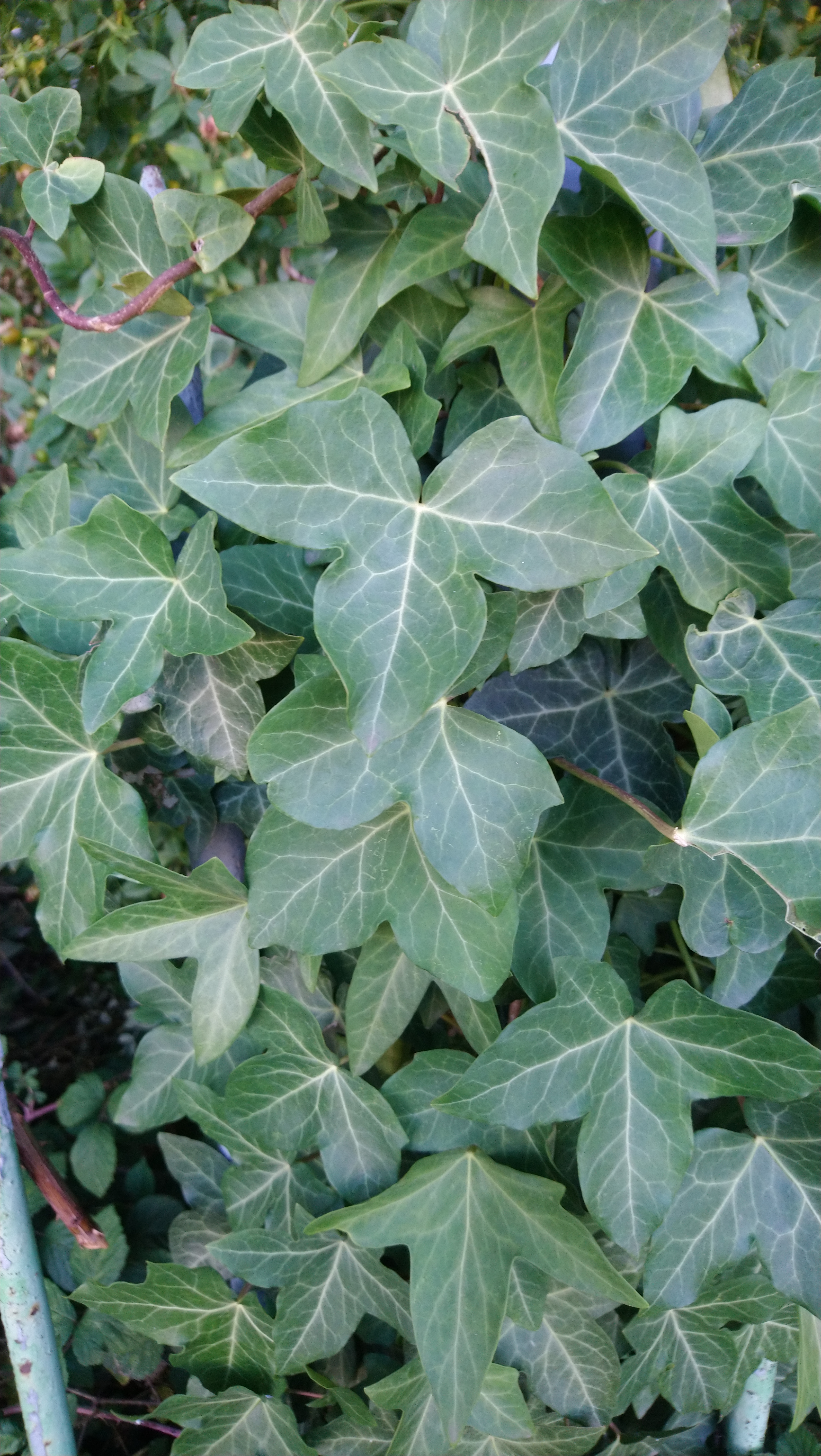
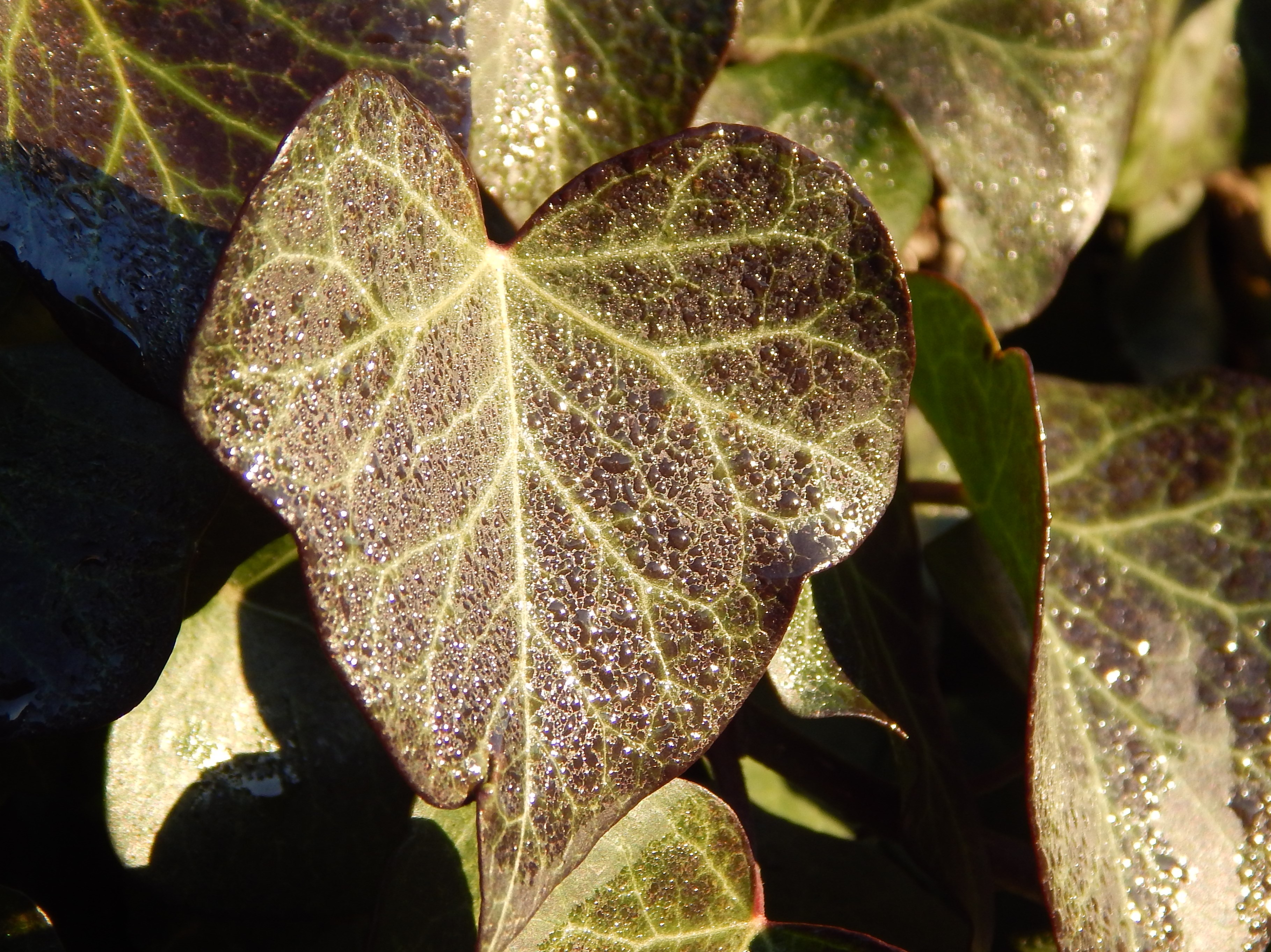

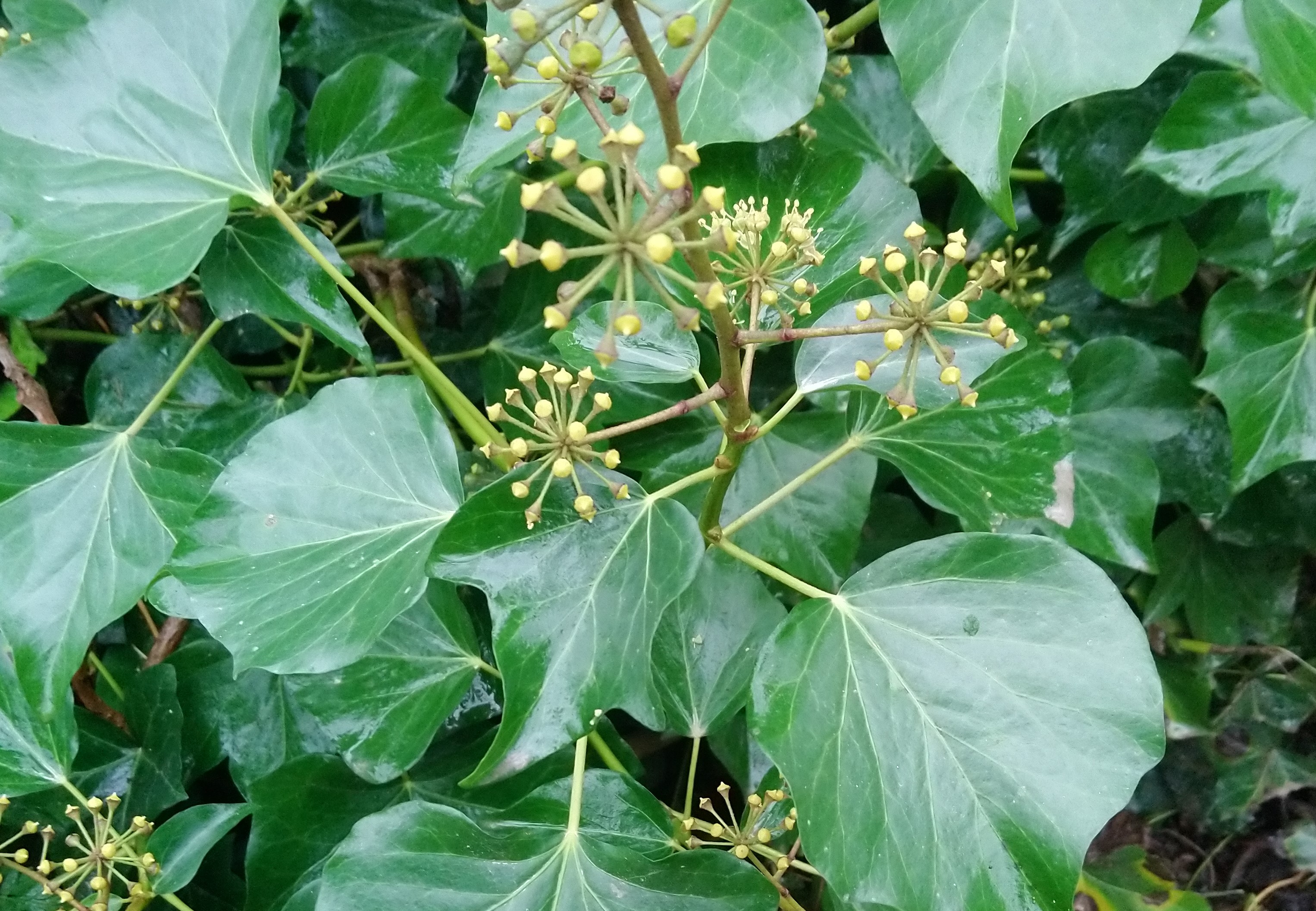
Flowers, which come from summer to late autumn, are small and inconspicuous, pale (almost white) greenish-yellow. Fruits are berries, gradually turning dark purple or black.
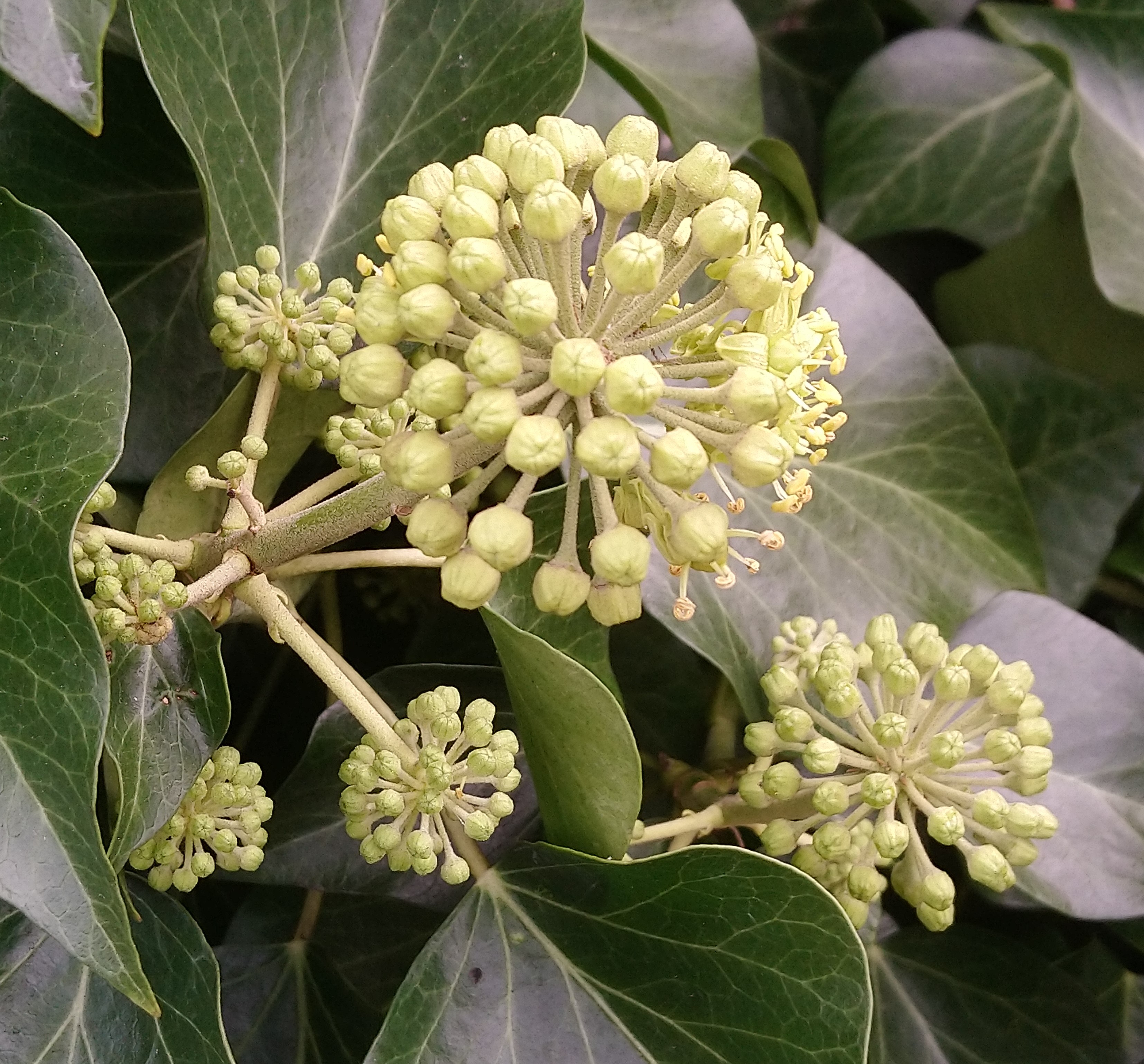
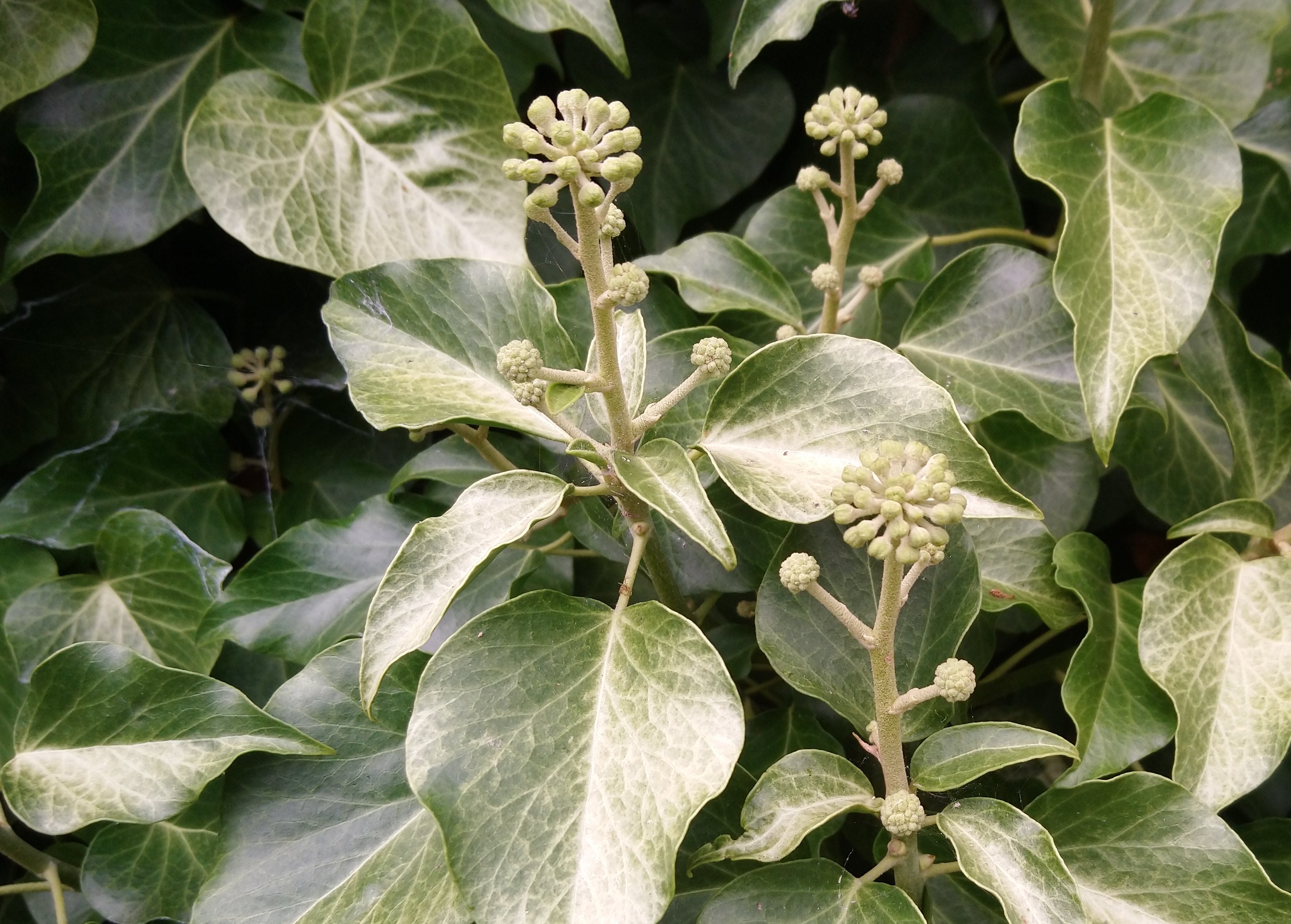


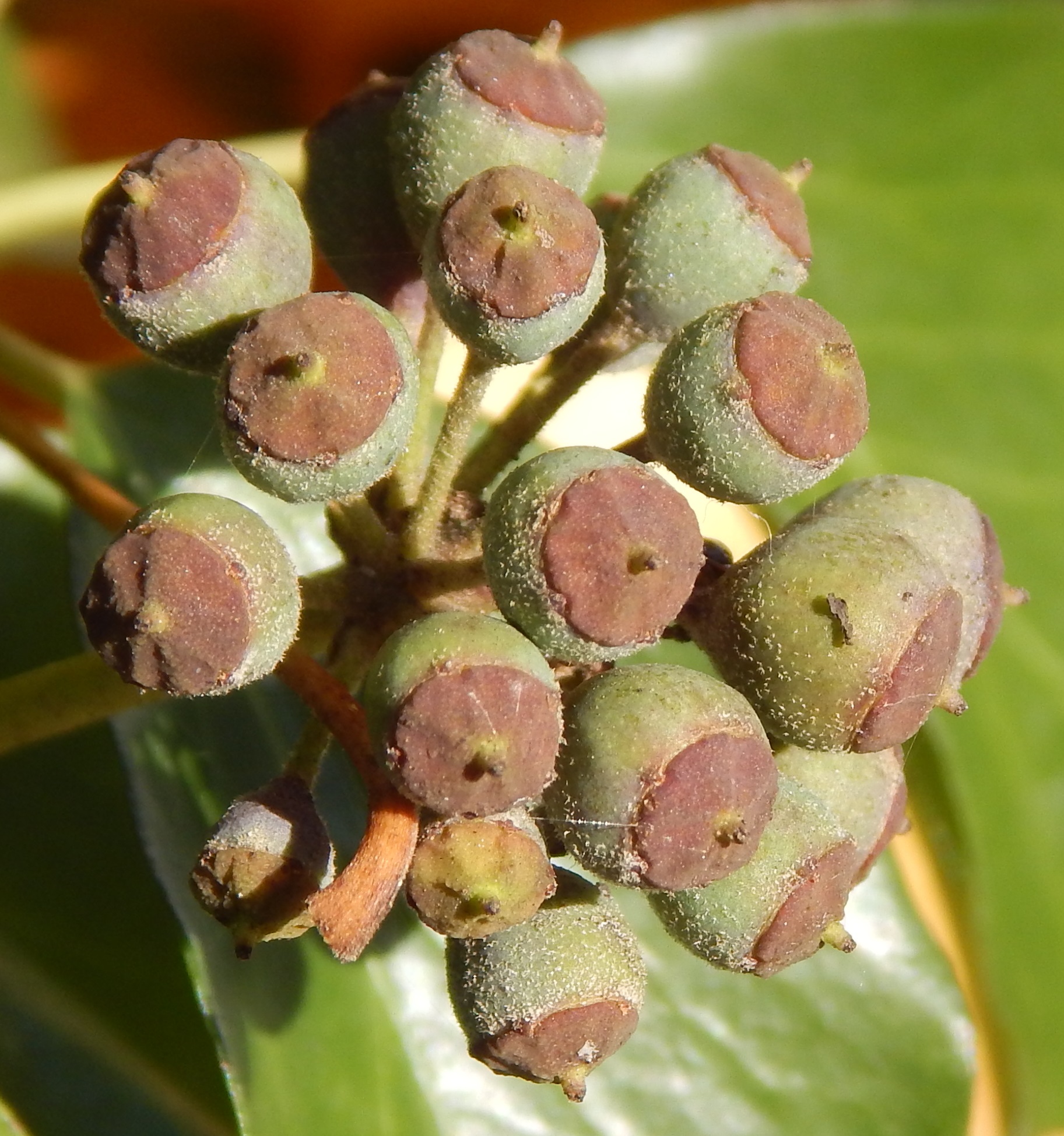
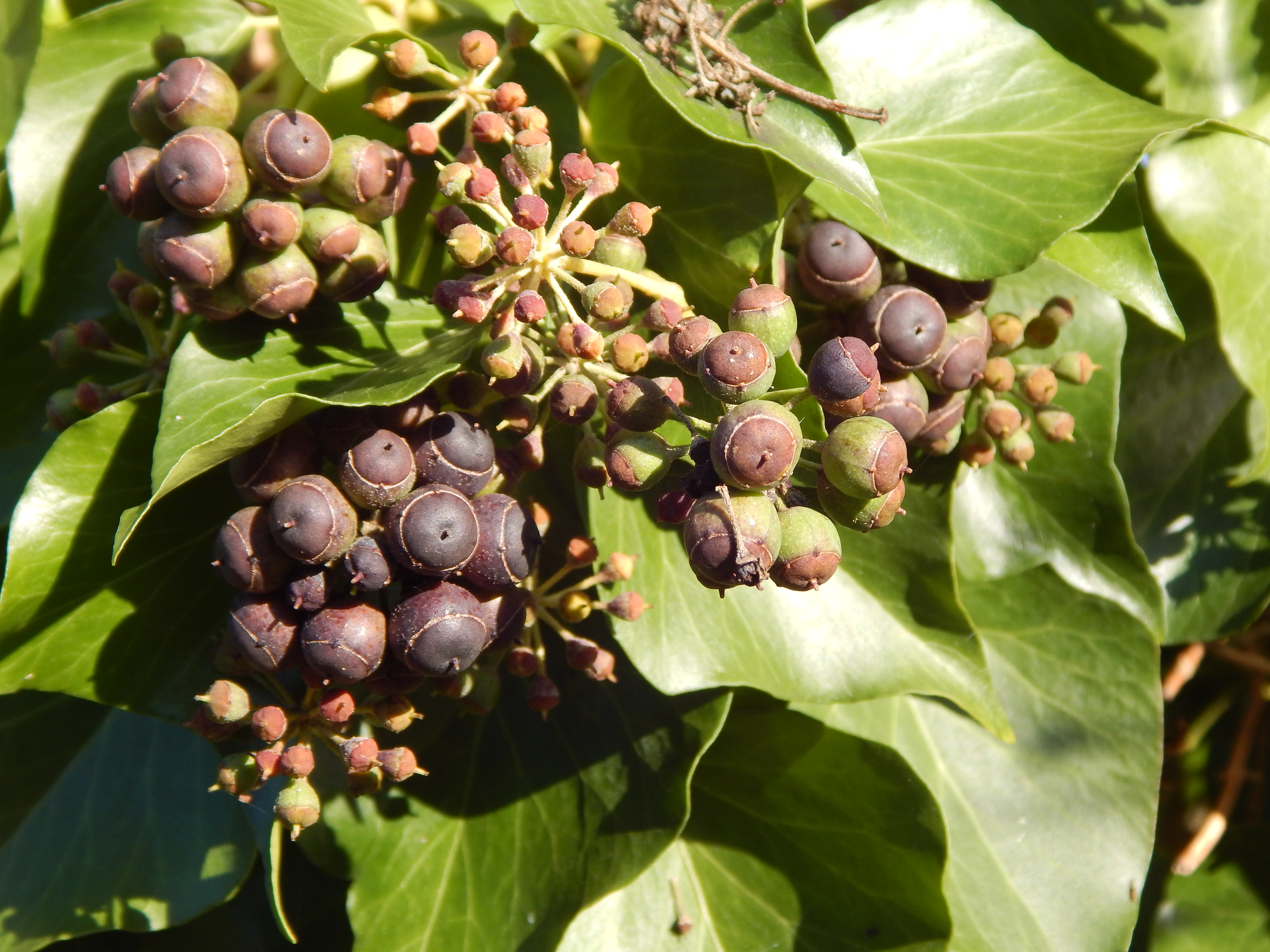

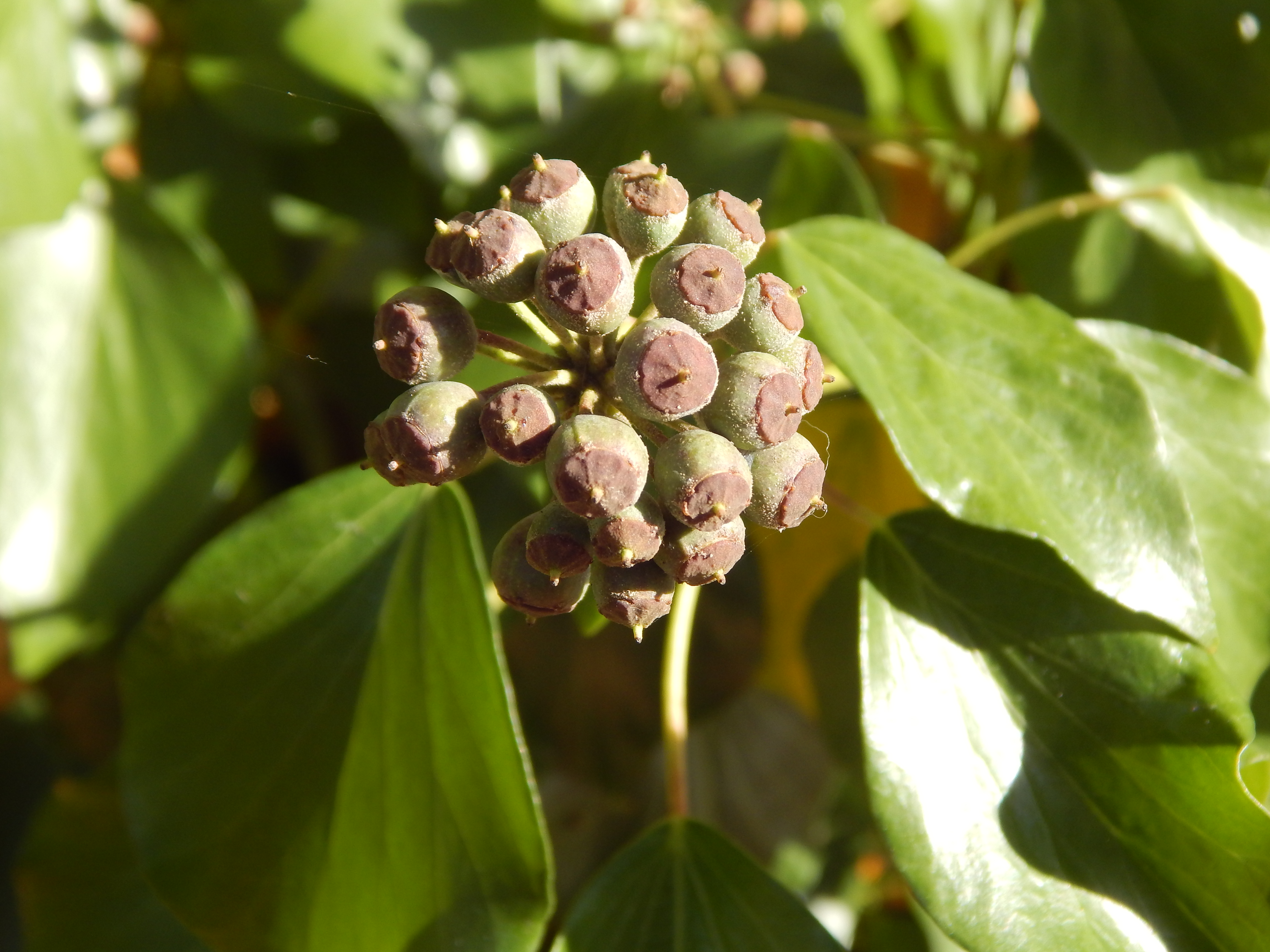
The leaves, flowers and fruit support many species – such as Colletes hederae, the Ivy Bee; [347-8] Thrushes, Blackcaps and [090] Woodpigeon; Angle Shades, Willow Beauty and several other moths. Ivy also allows birds to nest and invertebrates to overwinter in its dense foliage.
Habitat and use
Hedera helix is common and widespread over most of Europe.
There are many cultivars available, some with variegated leaves, some with bushy rather than climbing forms.
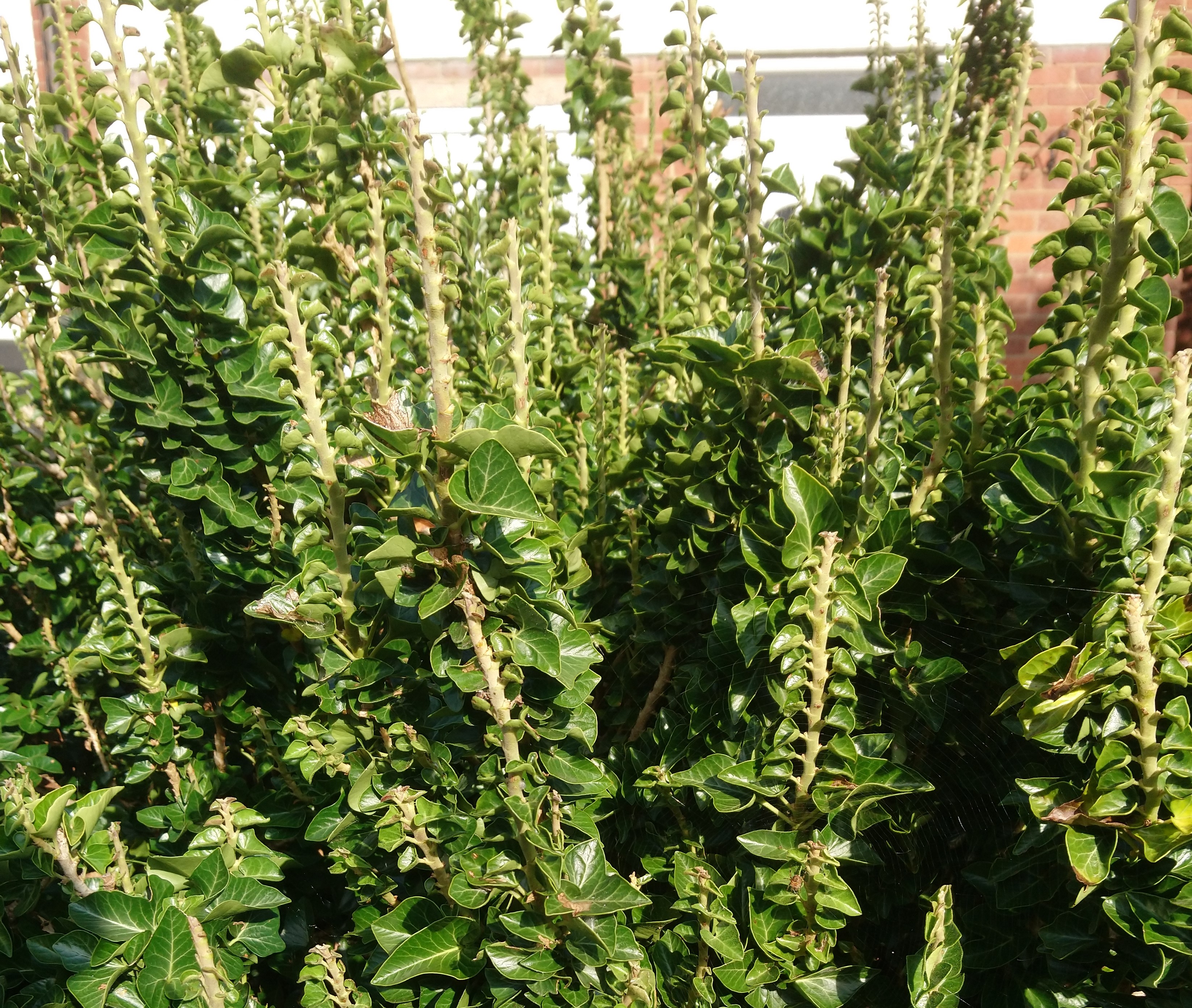

Cultivars of other species of Hedera are also cultivated. Some, like Hedera canariensis, may have larger variegated leaves.
Other Notes
This plant is seen in so many gardens that it is tempting to see it as a deliberately cultivated plant. Having had it for many tears in my garden, I would describe it as a weed that is impossible to eradicate. Sometimes it is allowed to grow as it is more attractive than the walls and fences it covers. Once it is established, the long and difficult task of cutting it all back produces only temporary relief – every centimetre of its spreading root structure also needs to be removed.

See also
The closest relative of this plant is [145] Fatsia japonica, which even forms an inter-generic hybrid.
Its superficially similar plants are other climbers such as [065] Large Bindweed, [091] Field Bindweed, [084-5] Clematis, [143] Bukhara Fleeceflower, [213] Honeysuckle and [306] Bramble – a mixture of wild and garden flowers and possibly unwanted weeds.
